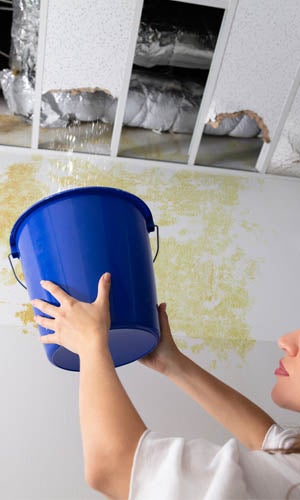The content which follows pertaining to Finding hidden leaks is definitely engaging. You should take a peek.

Early discovery of dripping water lines can alleviate a potential calamity. Some tiny water leakages may not be noticeable.
1. Take A Look At the Water Meter
Every residence has a water meter. Examining it is a guaranteed manner in which helps you uncover leakages. For starters, switch off all the water resources. Make certain nobody will flush, utilize the faucet, shower, run the cleaning device or dishwashing machine. From there, go to the meter and also watch if it will certainly change. Considering that nobody is utilizing it, there ought to be no motions. If it moves, that shows a fast-moving leakage. Likewise, if you detect no changes, wait a hr or 2 and also inspect back once again. This indicates you might have a slow leakage that could even be below ground.
2. Check Water Usage
If you spot abrupt changes, despite your intake being the same, it implies that you have leakages in your plumbing system. An unexpected spike in your bill shows a fast-moving leakage.
At the same time, a steady rise on a monthly basis, despite the very same habits, reveals you have a slow leakage that's additionally gradually escalating. Call a plumber to extensively inspect your building, particularly if you really feel a cozy location on your flooring with piping below.
3. Do a Food Coloring Test
30% comes from commodes when it comes to water consumption. Examination to see if they are running effectively. Decline flecks of food color in the tank and wait 10 minutes. There's a leak in between the storage tank as well as dish if the color in some way infiltrates your bowl during that time without flushing.
4. Asses Outside Lines
Don't neglect to inspect your outside water lines as well. Test spigots by attaching a garden pipe. Needs to water permeate out of the link, you have a loose rubber gasket. Change this and make sure all links are tight. It will aid obtain it professionally analyzed and maintained yearly if you have actually obtained a sprinkler system. One tiny leak can waste lots of water and increase your water expense.
5. Analyze the situation and also check
Homeowners must make it a practice to inspect under the sink counters and also even inside cabinets for any bad odor or mold and mildew development. These two warnings show a leak so punctual interest is required. Doing routine examinations, also bi-annually, can save you from a major issue.
Examine for stainings and damaging as many pipes and devices have a life expectations. If you presume leaking water lines in your plumbing system, do not wait for it to rise.
Early discovery of leaking water lines can mitigate a possible catastrophe. Some small water leakages might not be visible. Inspecting it is a surefire means that helps you discover leakages. One little leak can throw away loads of water and also increase your water bill.
If you think dripping water lines in your plumbing system, don't wait for it to intensify.
WARNING SIGNS OF WATER LEAKAGE BEHIND THE WALL
PERSISTENT MUSTY ODORS
As water slowly drips from a leaky pipe inside the wall, flooring and sheetrock stay damp and develop an odor similar to wet cardboard. It generates a musty smell that can help you find hidden leaks.
MOLD IN UNUSUAL AREAS
Mold usually grows in wet areas like kitchens, baths and laundry rooms. If you spot the stuff on walls or baseboards in other rooms of the house, it’s a good indicator of undetected water leaks.
STAINS THAT GROW
When mold thrives around a leaky pipe, it sometimes takes hold on the inside surface of the affected wall. A growing stain on otherwise clean sheetrock is often your sign of a hidden plumbing problem.
PEELING OR BUBBLING WALLPAPER / PAINT
This clue is easy to miss in rooms that don’t get much use. When you see wallpaper separating along seams or paint bubbling or flaking off the wall, blame sheetrock that stays wet because of an undetected leak.
BUCKLED CEILINGS AND STAINED FLOORS
If ceilings or floors in bathrooms, kitchens or laundry areas develop structural problems, don’t rule out constant damp inside the walls. Wet sheetrock can affect adjacent framing, flooring and ceilings.
https://www.servicemasterbyzaba.com/blog/how-to-detect-water-leakage-in-walls/

I'm very curious about Finding hidden leaks and I really hope you liked the blog entry. I beg you take a moment to promote this blog posting if you enjoyed reading it. Thanks a lot for your time spent reading it.